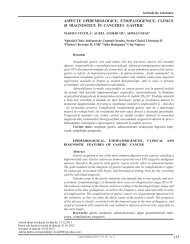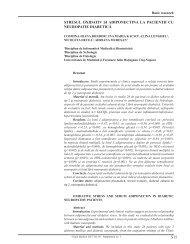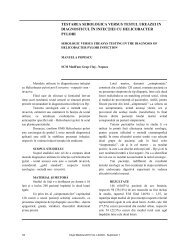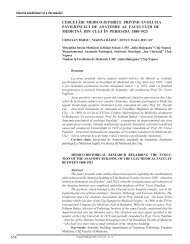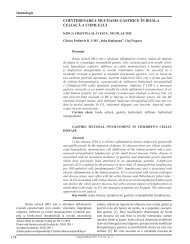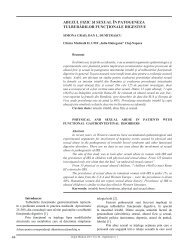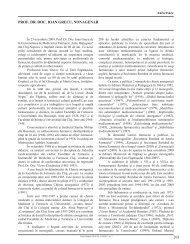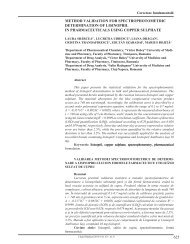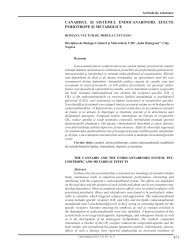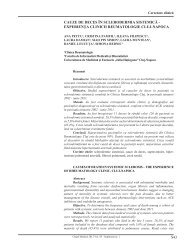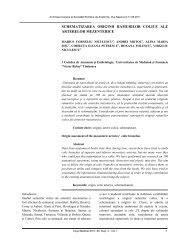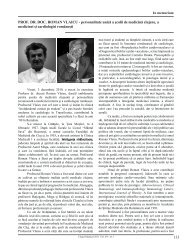You also want an ePaper? Increase the reach of your titles
YUMPU automatically turns print PDFs into web optimized ePapers that Google loves.
<strong>Clujul</strong> <strong>Medical</strong> 2006 vol. LXXX - nr. 1<br />
The orthostatic hypertensive reaction in a hypertensive<br />
population from ambulatory<br />
R.A. TRÎMBIŢAŞ, N. OLINIC<br />
Summary<br />
The orthostatic hypertensive reaction is defined as the increase with at least 10<br />
mmHg in the systolic blood pressure when changing the posture from decubitus to<br />
orthostatism. Unlike orthostatic hypotension, it is a less studied phenomenon, only<br />
recently taken into account. The aim of this study was to establish the prevalence of the<br />
orthostatic hypertensive reaction in a hypertensive population from ambulatory and to<br />
emphasise some clinical, electrocardiographic, echocardiographic and carotid<br />
ultrasonographic features of these patients. A number of 1000 hypertensives with<br />
systolic blood pressures ≥160 mmHg and/or diastolic blood pressures ≥100 mmHg were<br />
initially considered; only 707 remained in the follow-up. The blood pressure was<br />
measured bilaterally in dorsal decubitus, then immediatly after standing and after 3<br />
minutes of orhostatism. An electrocardiogram, an echocardiography and a carotid<br />
ultrasonography were undertaken in all the 707 patients. This study is an<br />
observational, descriptive and cross-sectional one.<br />
The prevalence of the orthostatic hypertensive reaction in the studied<br />
population was an unexpected high one (21.46%), especially comparing to the<br />
prevalence of the orthostatic hypotension (12.6%). Aproximatively a half of the subjects<br />
had an acute cornary syndrome (49%) or stroke (56.9% ) in their hisory. Left ventricular<br />
hypertrophy was encountered in 62.7% on the electrocardiogram and in 72.5% on the<br />
echocardiogram; more than a half of the patients with ultrasonographic left ventricular<br />
hypertrophy had an asymmetric septal hypertrophy. An increased (more than 0.8 mm)<br />
carotid intima media thickness was observed in 58.8% of the patients with orthostatic<br />
hypertensive reaction. We can conclude that in patients with moderate or severe<br />
primary hypertension the orthostatic hypertensive reaction is at least as frequent as the<br />
orthostatic hypotension; the phenomenon is associated with a high rate of acute<br />
atherothrombotic events in the clinical history and a high prevalence of markers of<br />
target organ damage.<br />
Key words: hypertension, orthostatism, acute atherotrombotic events.<br />
59



